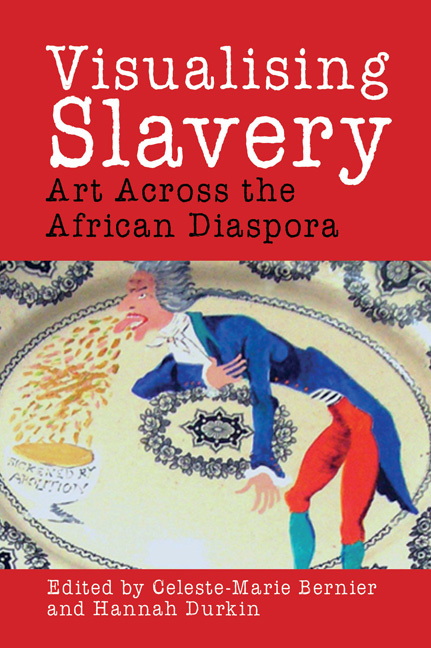Book contents
- Frontmatter
- Dedication
- Contents
- List of Illustrations
- Acknowledgements
- Introduction: ‘Inside the Invisible’: African Diasporic Artists Visualise Transatlantic Slavery
- Part I Slavery and Memory in Contemporary African Diasporic Art
- Chapter 1 Lost and Found at the Swap Meet: Betye Saar and the Everyday Object
- Chapter 2 Preserves
- Chapter 3 What Goes without Saying
- Chapter 4 Spectres in the Postcolonies: Reimagining Violence and Resistance
- Chapter 5 Strategic Remembering and Tactical Forgetfulness in Depicting the Plantation: A Personal Account
- Part II Historical Iconography and Visualising Transatlantic Slavery
- Part III African Diasporic Monuments and Memorialisation
- Part IV Contemporary Legacies in African Diasporic Art
- Afterword: Against the Grain: Contingency and Found Objects
- Notes on Contributors
- Index
- Platesection
Chapter 2 - Preserves
from Part I - Slavery and Memory in Contemporary African Diasporic Art
- Frontmatter
- Dedication
- Contents
- List of Illustrations
- Acknowledgements
- Introduction: ‘Inside the Invisible’: African Diasporic Artists Visualise Transatlantic Slavery
- Part I Slavery and Memory in Contemporary African Diasporic Art
- Chapter 1 Lost and Found at the Swap Meet: Betye Saar and the Everyday Object
- Chapter 2 Preserves
- Chapter 3 What Goes without Saying
- Chapter 4 Spectres in the Postcolonies: Reimagining Violence and Resistance
- Chapter 5 Strategic Remembering and Tactical Forgetfulness in Depicting the Plantation: A Personal Account
- Part II Historical Iconography and Visualising Transatlantic Slavery
- Part III African Diasporic Monuments and Memorialisation
- Part IV Contemporary Legacies in African Diasporic Art
- Afterword: Against the Grain: Contingency and Found Objects
- Notes on Contributors
- Index
- Platesection
Summary
Often, the simple act of taking tea or the mere presence of a teacup, a spoon or a canning jar can become an important vehicle in the preservation and transmission of personal memory, ancestral knowledge and historic events. The power of association and the storytelling tradition can be invaluable tools. I am interested in common rituals, such as the preparation and consumption of food, and the way in which everyday objects used in these rituals can inspire a dialogue.
When my grandmother opened an aqua blue jar of homemade sweet pickles, it was as if stories flowed from it. One thing would lead to another. The elders would start talking about recipes, how rich or poor the local harvest was that season, who made the pickles, how she was related to us and how one could travel to her home via one route or another. The conversation would take many turns. Large family gatherings were immeasurable gifts, as were the long road trips from our home in Ohio to my grandparents’ homes in Illinois and Indiana. The journey was an eight- to nine-hour drive before Interstate 70 was constructed. Storytelling and chiming in on my father's bluesy spirituals were our favourite pastimes. Once we arrived, an entire universe that connected the present with the past and the future unfolded. This incredible experience usually began with a simple meal. So domestic utensils – teacups, tureens, ladders and canning jars – as well as photographs and my mother's hand-drawn maps are some of the devices I use to tell stories. Reflected in my work are ways in which these objects were revered, displayed and stored. Among the women in particular, canning was a locus through which much was passed and the moody blue aqua canning jar was treasured.
Preserves is a three-part series that includes Strange Fruit, Mattoon and Patoka Hill. It is a multifaceted memory map that traces personal and collective narratives. The canning jar becomes an infinitely versatile prism where narratives unravel. This jar has great personal significance, but it is also a familiar object to which most viewers readily connect. The canning jar is a container that can seal and preserve matter for consumption or display. Metaphorically, it functions as a portal or a time capsule that can preserve anything for reconstitution or safekeeping.
- Type
- Chapter
- Information
- Visualising SlaveryArt Across the African Diaspora, pp. 29 - 33Publisher: Liverpool University PressPrint publication year: 2016



